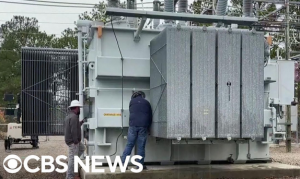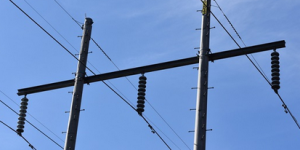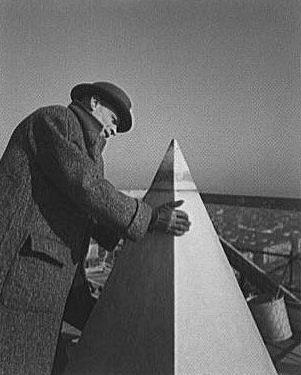Why Electric Power Grids Need Our Protection
Summary: Is electricity a necessity to fight for or a conspiracy to fight against?
Electric power and utility companies take a lot of criticism these days: negative news, disaster impacts, and techno-critics. Sometimes we wish that our lives could be simpler and less expensive; however, the extraordinary history and amazing impact of electricity in the 20th century demands that we safeguard its irreplaceable and increasing role in our lives. One thing we cannot do is stand by while our neighborhoods and neighbors are needlessly victimized.
Hunters sometimes used to take pot shots at a few power poles. While annoying, they didn’t damage the electricity distribution infrastructure of the United States or cost too much to fix. On the other hand in 2022, a guy with a rifle carefully shot holes in several big electrical transformers in North Carolina 
 that had the effect of shooting neighbors, friends, schools, and businesses in the foot or the bank account because electricity is the lifeblood of the 20th—and now the 21st—century. During World War II, damaging infrastructure was called sabotage, a term so vile my parents could hardly speak the word. Recently, legislatures are strengthening penalties for electrical sabotage. As one new bill’s proponent states, “We don’t know how important our electric grid is until we lose it. We had folks of course, ladies and gentlemen, whose health, whose life depended on the electricity to run their oxygen machines. We had life and death really in our own hands.”
that had the effect of shooting neighbors, friends, schools, and businesses in the foot or the bank account because electricity is the lifeblood of the 20th—and now the 21st—century. During World War II, damaging infrastructure was called sabotage, a term so vile my parents could hardly speak the word. Recently, legislatures are strengthening penalties for electrical sabotage. As one new bill’s proponent states, “We don’t know how important our electric grid is until we lose it. We had folks of course, ladies and gentlemen, whose health, whose life depended on the electricity to run their oxygen machines. We had life and death really in our own hands.”
How did we get to a point where cavalier damage can cause death? Let’s take a short walk through the very young history of US electric power, its almost-miraculous timing before World War II, and a prescription to counteract the threat to our greatest necessity.
If we thought about how electricity gets to our houses, we’d be utterly amazed
No one would have lost electricity in the 19th Century because there was no electrification. No wires, stations, or equipment. Until Tesla’s 1888 invention of the dynamo for generation, the transformer for transmission, and compact electric motors (plus Edison’s light) there were only steam engines or factories clustered around rivers to get power—expensive and inefficient, but the only option.
Electricity brought light to midnight, great motors to factories, pumps to faraway oilfields, and skiers to the tops of mountains. Electricity was unlimited power at our fingertips. Up to the 1920’s, small private utilities only had the money to provide cities with the luxury of electric power.
Roosevelt’s New Deal electrifies every house, farm, and business in the US
Only 40 years after Tesla’s inventions, President Franklin Roosevelt’s administration recognized that electricity was a resource that, managed correctly, could vault the United States into a #1 world industrial position. Electric production could also stop yearly flooding on several uncontrolled rivers that cost millions in damage, disease, and regional poverty.
Roosevelt recognized that private industry would not take on such a massive, risky investment in an unfamiliar technology with an unknown future. Much of the benefit would flow to undereducated, backwater regions who mistrusted both change and the ‘Federals.’ At the same time, armies of Depression-era labor were available to make these ambitious projects a reality.
Three New Deal programs were cornerstones of an electricity strategy:
- Bonneville Power Administration (BPA, 1937) for the NorthWest
- Tennessee Valley Authority (TVA) for the Tennessee, Cumberland, and Ohio river valleys
- Rural Electrification Act of 1936 (RECC), distributed power throughout the country outside of cities so that every community would have the infrastructure for industry, clean water, public safety, and better living conditions. Considered one of the most successful government programs ever, the RECC provided electricity to 1.5 million farms in 2 years. Many of the RECC utilities still exist today.
Aluminum, Ammonia, and winning World War II
In a truly extraordinary stroke of good luck, these US government programs completed extraordinary electric infrastructure projects just as it was needed most: the unprecedented needs of World War II.
While alumina ore is very plentiful in the earth, processed aluminum used to be more expensive than gold. The small tip of the Washington Monument was first displayed at Tiffany’s before its placement.  Within 10 years, electricity became key to inexpensive aluminum refining. Electric furnaces could make miles of aluminum sheet for a tiny fraction of the previous cost, as well as more exotic alloys of titanium, magnesium, and tungsten. Aluminum’s light weight and strength made it the major component of every aircraft in World War II.
Within 10 years, electricity became key to inexpensive aluminum refining. Electric furnaces could make miles of aluminum sheet for a tiny fraction of the previous cost, as well as more exotic alloys of titanium, magnesium, and tungsten. Aluminum’s light weight and strength made it the major component of every aircraft in World War II.
Ammonia was first synthesized in the Haber-Bosch process around 1900 but was difficult and expensive to make in quantity. Electricity simplified the high temperatures and pressures required for mass production of fertilizers, explosives, and war munitions—all critical for World War II and beyond.
In the 1950’s, ammonia fertilizers made America the major food exporter as the world rebuilt.
In other words, dependable electricity has been key to American success for almost 100 years.
100-year-old equipment still works alongside new technologies
Much of today’s electricity infrastructure was architected and built in the 1930’s from water power, 1950’s from fossil fuel, and 1970’s from nuclear. Parts of the electric distribution system still function after almost 100 years, while new generation and transmission methods are achieving rapid adoption and uses. The electric grid is also ideal to incorporate new ideas, folding in renewable sources and time-shifting methods to ensure a constant supply of power and light to everyone.
The community risk and lessons from Ukraine demand that every citizen act
A community without electricity loses clean water and sewage treatment, a major factor in preventing widespread disease. All of the fast food restaurants close because deep fat fryers turn cold and frozen food spoils. Hospitals and clinics lose sterilization. Gasoline and diesel isn’t pumped anymore, stranding transportation. Food rots on shelves, pushing vulnerable populations into hunger.
Russia destroyed billions of dollars’ worth of Ukraine’s power grid in 2022-23. Russia firmly states that destroying electric power is the best way to destroy hope for the future—the will to fight—the will to live. Ukraine’s people are building the grid back as rapidly as possible because they know it is critical for life and defense against Russians. Without it, both Ukrainians and Russians freeze in the harsh weather.
Local utilities did not overly protect the American electricity infrastructure when it was built because people realized electricity’s value to each individual and neighbor. Utilities are now scrambling to install new security technology; until these points are hardened, we need to protect our own power grids and communities.
There are organizations and ordinary people who are angry or greedy or mean enough to take advantage of denying things to others. Some think that chaos will bring them pleasure or profit. Some have a beef with ‘the man’ or with the local utility. Some consume radical or sinister ideas from social media without thinking how their actions might harm themselves and others. We all know people who could be hurt: firefighters, hospitals, and sick or elderly people who need electricity to live.
What can we do? If you know someone, discourage them. If they won’t change, notify someone. 
Finally, encourage state and Federal authorities to prosecute damage against electric, water, or transportation systems as felony sabotage. Sabotage is still hated: remember the villain’s fall from the Statue of Liberty’s torch in the final scene from Alfred Hitchcock’s 1942 movie Saboteur.